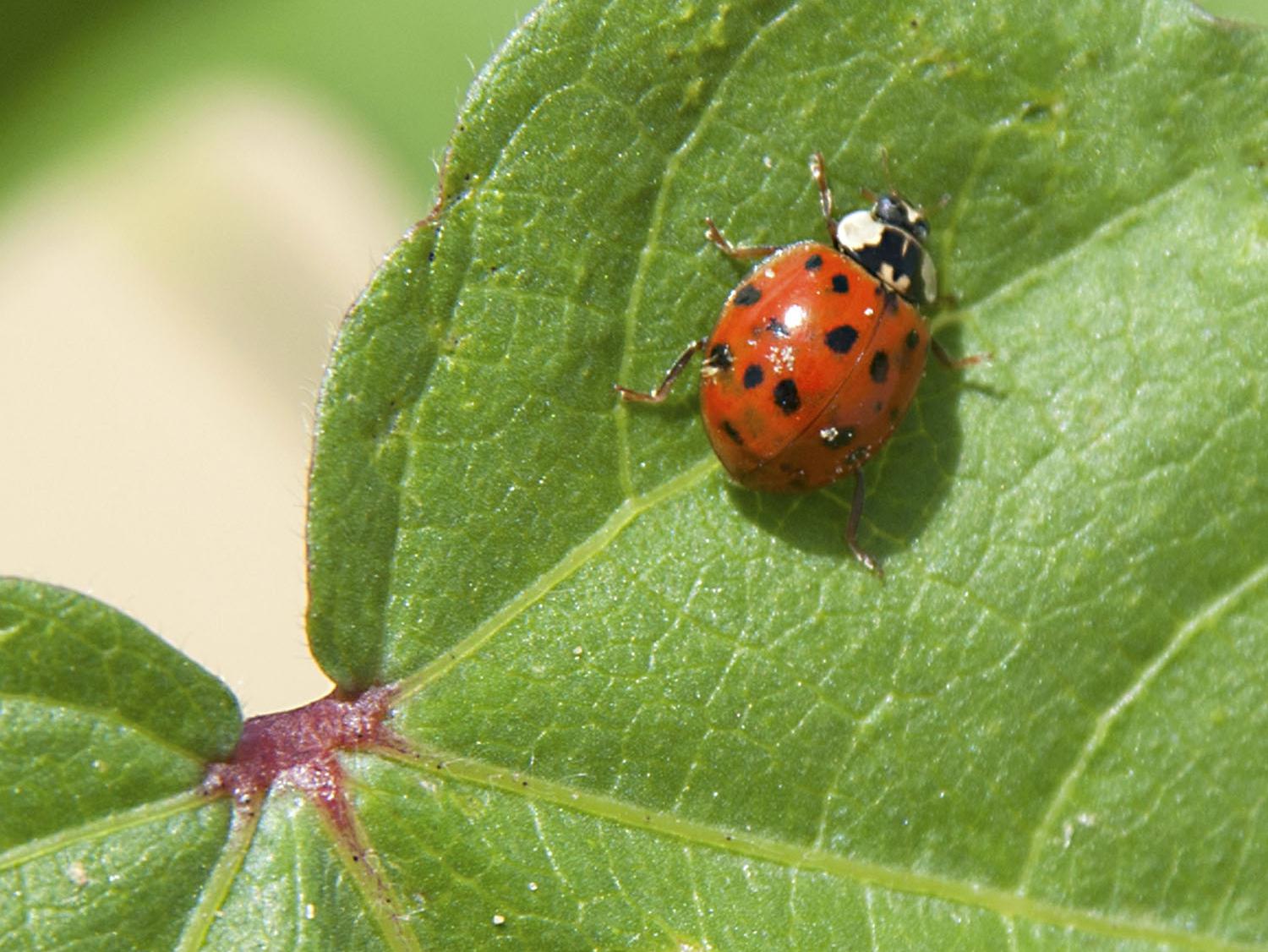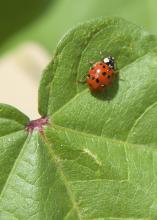Information Possibly Outdated
The information presented on this page was originally released on March 16, 2016. It may not be outdated, but please search our site for more current information. If you plan to quote or reference this information in a publication, please check with the Extension specialist or author before proceeding.
Asian lady beetles can be major home nuisance
STARKVILLE, Miss. -- Asian lady beetles are known for inviting themselves into houses and other structures during winter to hibernate, but they can be just as much of a nuisance in the spring when they are trying to go back outside.
Soffit and gable vents in home attics are common entry points for the beetles, but they will come in any way they can. Any crack in windows, walls or the sides of doors is a welcome mat.
Blake Layton, an entomologist with the Mississippi State University Extension Service, said it is no coincidence that most homeowners who face problems with Asian lady beetles and many other insects live in wooded areas. Asian lady beetles are beneficial because they feed on tree-dwelling aphids, white flies, small caterpillars and other pests.
However, when the beetles are indoors, they serve no good purpose and become pests themselves, Layton said.
“They’re a real problem in the fall when they’re trying to come in,” Layton said. “When they get inside and settle in for the winter, you don’t see them until it warms up. Once spring arrives, they’re ready to leave, but many of them tend to get lost in the process and die inside the house. They can cause small stains on walls and wall coverings, and some people are allergic to the dust from the bodies of dead beetles.”
It is not advised to seal off cracks on the exterior of the house this time of year because that would only trap the beetles inside.
“I tell people who call me about this problem to sweep or vacuum them up while they’re trying to move outdoors,” Hinds County Extension agent Kyle Lewis said. “I would recommend sealing cracks on the interior of the home to exclude them from coming in and use pesticides only has a last resort because it isn’t practical.”
Any time of year is acceptable for sealing cracks on inside walls and ceilings, along with doors and windows that open directly to the outside. Check roof, gable and soffit vents to make sure they are adequately screened.
“Even if the beetles have already gotten into your attic or wall voids, you may still be able to keep them from getting into your living area,” Layton said. “Seal around electrical outlets, light fixtures, and other holes in interior walls and ceilings. The better you are able to seal the beetles out of your living area, the fewer you will have to vacuum. But don’t overdo it. Be sure to maintain enough ventilation for health and safety.”
The best way to avoid future beetle congregations is to keep them out of the house in the first place. Summer is the best time to seal off entry points on the exterior of the home. Depending on location and weather conditions, lady beetles normally begin searching for overwintering sites in October.
“You can apply residual sprays of synthetic pyrethroid insecticides to exterior areas of invasion-prone buildings to reduce the number of beetles that successfully enter the building,” Layton said. “These treatments are most beneficial on buildings that have too many potential entry points to effectively seal. Where sealing is practical, it is far more effective than relying on insecticides, and it can also conserve energy.”
When sealing, install sweeps on door bottoms and metal spring strips or weather stripping around door jambs to keep lady beetles from entering at these points. Use caulking or foam sealant to seal entry points around plumbing and cracks in brickwork and woodwork.
For more information about pests in the home, see Extension Publication 2443, “Control Household Insect Pests.”



